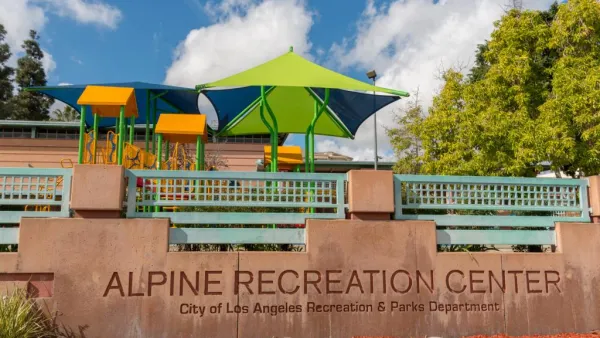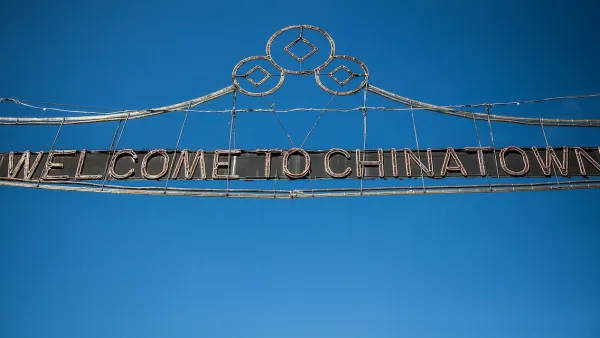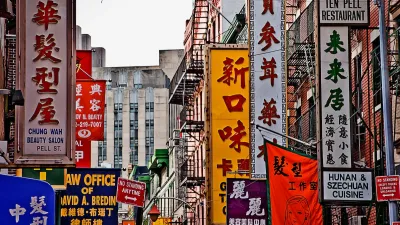New York's Chinatown has been impenetrable to non-Chinese entrepreneurs for a century, but new glitzy bars and restaurants are beginning to push through. In a neighborhood that has suffered since 9/11, locals debate the merits of outsider investment.
White Star Bar, which specializes in absinthe, is located in the heart of New York's Chinatown. Owner Sasha Petraske responds to the cries of gentrification:
"'People conflate two totally separate issues. What they don't like are people who are inconsiderate and entitled. That's not the same thing as money. What ruins a neighborhood is running businesses irresponsibly,' says Petraske, indirectly referencing the drunken partyers who litter certain New York City sidewalks. As for the unglamorous corner that is home to his latest venture: 'This part of Manhattan is the only part left that can hold its own against Downtown Brooklyn,' he says with a laugh.
Beatrice Chen, the director of education at the Museum of Chinese in America, takes a pragmatic view of the changes. She doesn't fall on one side or the other of the gentrification issue, clarifying that though she doesn't want Chinatown to become the next Lower East Side, she doesn't want it to be stagnant, either. "Chinatown is still revitalizing after 9/11," she says. 'Forty restaurants closed after that month of blocking off Canal Street. That's a huge consideration' She also notes that outside entrepreneurs are hardly the only ones opening businesses there. Yello, a popular and relatively new Chinese-American-owned bar on Mulberry Street, is 'a sign of change in Chinatown' -the younger generation making its trendy mark-as is its neighbor, Mama Café, which is also owned by Chinese-Americans.
FULL STORY: Point of gentry

Planetizen Federal Action Tracker
A weekly monitor of how Trump’s orders and actions are impacting planners and planning in America.

Chicago’s Ghost Rails
Just beneath the surface of the modern city lie the remnants of its expansive early 20th-century streetcar system.

San Antonio and Austin are Fusing Into one Massive Megaregion
The region spanning the two central Texas cities is growing fast, posing challenges for local infrastructure and water supplies.

Since Zion's Shuttles Went Electric “The Smog is Gone”
Visitors to Zion National Park can enjoy the canyon via the nation’s first fully electric park shuttle system.

Trump Distributing DOT Safety Funds at 1/10 Rate of Biden
Funds for Safe Streets and other transportation safety and equity programs are being held up by administrative reviews and conflicts with the Trump administration’s priorities.

German Cities Subsidize Taxis for Women Amid Wave of Violence
Free or low-cost taxi rides can help women navigate cities more safely, but critics say the programs don't address the root causes of violence against women.
Urban Design for Planners 1: Software Tools
This six-course series explores essential urban design concepts using open source software and equips planners with the tools they need to participate fully in the urban design process.
Planning for Universal Design
Learn the tools for implementing Universal Design in planning regulations.
planning NEXT
Appalachian Highlands Housing Partners
Mpact (founded as Rail~Volution)
City of Camden Redevelopment Agency
City of Astoria
City of Portland
City of Laramie





























